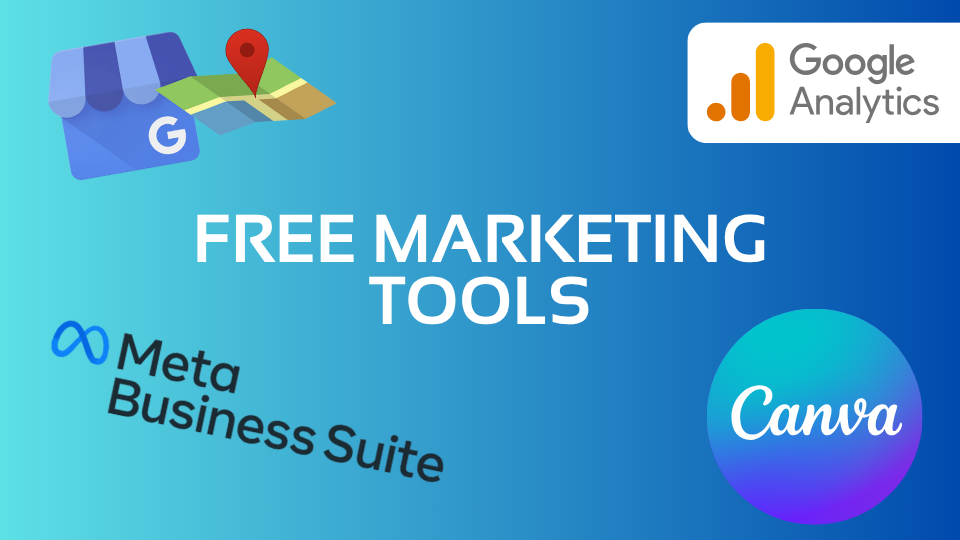Your Digital Storefront

In today’s fast-paced digital world, your online presence serves as the primary face of your business. Think of it as your “digital storefront.” Just like a physical store, your digital presence needs to be clean, inviting, and constantly updated to attract and retain customers. A well-maintained digital storefront not only enhances customer experience but also significantly boosts your online visibility, leading to higher engagement and sales. This article explores the key components of an effective digital storefront and provides actionable tips to help you optimize your business’s online presence for free.
The Components of a Digital Storefront
A digital storefront encompasses various elements, including your website, social media profiles, Google My Business listing, and other online platforms where your business is represented. Here’s a breakdown of each component and why it’s crucial:
1. Website
- Mobile Responsiveness: With over 50% of global web traffic coming from mobile devices, having a mobile-responsive website is essential. A mobile-friendly site not only improves user experience but also positively impacts your search engine ranking.
- Functionality and Design: A clean, well-designed website with easy navigation and quick load times keeps visitors engaged and reduces bounce rates. Ensure your site is free of broken links, outdated content, and clutter.
2. Social Media Profiles
- Regular Content Posting: 54% of social browsers use social media to research products, highlighting the importance of an active social media presence. Consistent and engaging content on platforms like Facebook, Instagram, and LinkedIn helps build your brand and keeps your audience engaged. Aim to post relevant content, including updates, promotions, and industry news, at least a few times a week.
- Interactivity: Respond to comments, messages, and reviews promptly. Engaging with your audience builds trust and shows that you value their feedback.
3. Google My Business (GMB)
- Complete and Accurate Information: Ensure your GMB profile is fully populated with accurate information, including your business name, address, phone number, hours of operation, and services offered. Add high-quality photos and regularly update posts to keep your profile fresh. Businesses with complete and accurate GMB profiles are 70% more likely to attract location visits and 50% more likely to lead to a purchase.
- Customer Reviews: Encourage satisfied customers to leave positive reviews. Though soliciting these reviews are important, it is equally as important to respond to reviews, both positive and negative, to show that you value customer feedback and are committed to improving your service.
How a Clean and Populated Digital Storefront Boosts SEO
1. Improved Search Engine Rankings
- Mobile Responsiveness: Search engines like Google prioritize mobile-friendly websites in their search results. A responsive design ensures your site ranks higher and reaches a broader audience.
- Regular Updates: Fresh content signals to search engines that your website is active and relevant, improving your chances of ranking higher in search results.
- Backlinks and Engagement: High-quality content and active social media profiles can attract backlinks from reputable sites and increase user engagement, both of which are crucial for SEO.
2. Enhanced Local SEO
- Google My Business: An optimized GMB profile helps your business appear in local search results and Google Maps, increasing your visibility to potential customers in your area. According to Google, businesses with complete and accurate GMB profiles are twice as likely to be considered reputable by consumers.
- Local Listings and Citations: Consistent information across various online directories and citation sites strengthens your local SEO and boosts your credibility.
3. Increased Website Traffic and Conversion Rates
- User Experience (UX): A clean, fast-loading website with easy navigation improves user experience, encouraging visitors to stay longer and explore more pages. This can lead to higher conversion rates.
- Social Media Traffic: Active social media profiles drive traffic to your website. Sharing blog posts, promotions, and engaging content on social platforms can significantly increase your site’s visitors and potential leads.
Actionable Tips for Maintaining Your Digital Storefront
1. Audit Your Website Regularly
- Perform regular checks for broken links, outdated content, and loading speed. Tools like Google Analytics and SEMrush can help you identify and fix issues promptly.
- Ensure your site is mobile-responsive. Use Google’s Mobile-Friendly Test tool to check your site’s performance on mobile devices.
2. Consistent Social Media Activity
- Create a content calendar to plan and schedule posts in advance. This ensures you maintain a regular posting schedule without last-minute stress.
- Use free tools like Canva for creating visually appealing graphics and Hootsuite or Buffer for scheduling posts across multiple platforms.
3. Optimize Your Google My Business Profile
- Complete all sections of your GMB profile with accurate and up-to-date information. Add high-quality images and regularly post updates.
- Monitor and respond to customer reviews. Positive reviews can boost your credibility, while addressing negative feedback shows your commitment to customer satisfaction.
4. Leverage Free SEO Tools
- Use Google’s suite of free tools, including Google Search Console and Google Analytics, to monitor your site’s performance and identify areas for improvement.
- Optimize your content with relevant keywords using free keyword research tools like Ubersuggest and AnswerThePublic.
Conclusion
Maintaining a clean and populated digital storefront is no longer optional; it’s a necessity for any business aiming to thrive in the digital age. By ensuring your website is mobile-responsive, actively engaging on social media, and optimizing your Google My Business profile, you can significantly boost your online visibility, enhance your SEO efforts, and attract more customers.
If navigating the complexities of digital marketing feels overwhelming, don’t hesitate to reach out to the trusted team at Performance Digital. We’re here to help you optimize your digital presence and achieve your business goals. Contact us today to start your journey towards a stronger, more visible online presence.


